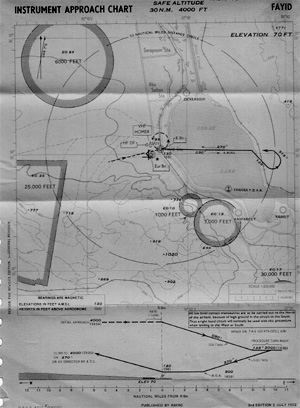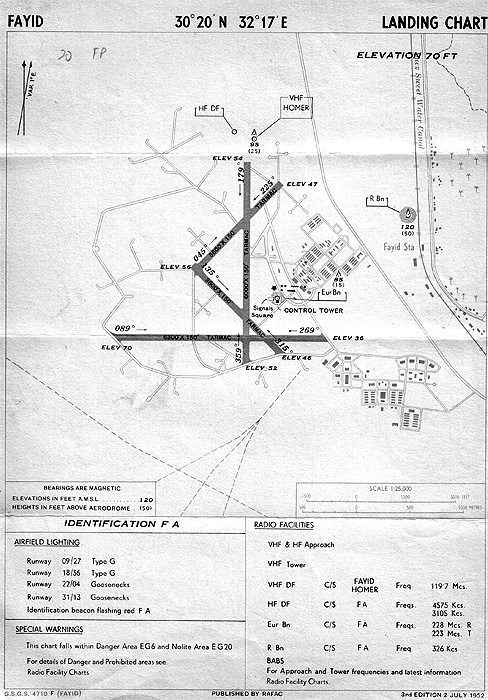
AIR TRAFFIC CONTROL, RAF FAYID 1952
"LANDING HAZARD"
As Remembered By Barry Dawson
The reminiscence ‘To the Top of the Flea’ by Murray Brazier (August Issue) certainly took me back to the same era, as Mount Shubra (Gebel Shubra Wit) was a very real hazard to aircraft landing on the main 18/36 runway at RAF Fayid.
You will see from the RAFAC chart for Fayid (below) issued in July 1952 the warning box on the Radio Compass Approach that low level manoeuvres were to be carried out only North of the airfield because of high ground to the South. In actual fact, the ‘high ground’ (i.e. the top of the Flea) had a maximum elevation directly in line with the runway of some 600 feet. Mind you, in a flat desert area that can appear to be very high indeed!.


Part of the duty of the Air Traffic Control Fire Tender crews was to go up Mount Shubra every evening and refill and light the gooseneck flares which were placed on the pinnacle to warn aircraft. Originally the RAF had laid an electric line to the top, but the light fingered locals soon found it and decided that the wires were much more useful to themselves than the British Government - hence the use of paraffin lights!
The fire crews used Land Rovers to get up to the top and, believe me, it was an extremely exciting ride - the last few feet had to be taken at full throttle and then, when you reach the summit, the vehicle had to be swung quickly through 90 degrees to make sure it stayed on the top and didn't go straight over the other edge, as the flat top was narrow - the drop on the other side was nearly sheer and fell some 30/40 feet.
I did however walk up from Fayid a couple of times as the view was well worth
the effort. Over the Southern edge of the Mount, the land fell into a wadi and
the sides of the Mount were actually made up of thousands of fossilized sea
shells.